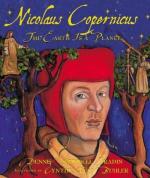|
This section contains 1,053 words (approx. 4 pages at 300 words per page) |

|
Nicholaus Copernicus and Johannes Gutenberg
Summary: Explores the Scientific Revolution, mainly focusing on contributions made by Johannes Gutenberg and Nicholaus Copernicus. Describes how during this time, methods of learning and the concepts of science shifted from scholastic methods of reasoning to the scientific method we use today. Prior to the revolution, many explanations were connected to the supernatural and personal beliefs of society.
The Scientific Revolution was a period of discovery and advancement in the fields of cosmology, astronomy and physics. It began with the discoveries of Nicolaus Copernicus and ended with the work of Newton. Methods of learning and the concepts of science shifted from scholastic methods of reasoning to the scientific method we use today. Prior to the revolution, many explanations were connected to the supernatural and personal beliefs of society. The discoveries of the revolution, which lasted roughly 200 years, caused a change in conceptual, cultural and social beliefs regarding nature, knowledge and belief. Without the work of Nicolas Copernicus and Johannes Gutenberg, we may have never been taught the information that we all accept as simple common knowledge in today's times.
1543: The beginning of the scientific revolution. This was the year Nicolaus Copernicus published "The Revolution of Heavenly Bodies." Before this publication, scholastic methods of reasoning explained that...
|
This section contains 1,053 words (approx. 4 pages at 300 words per page) |

|


